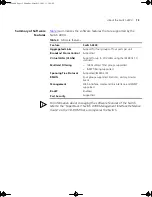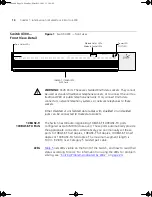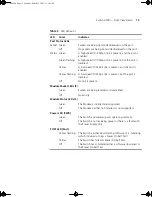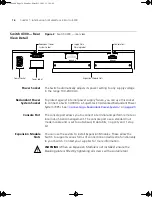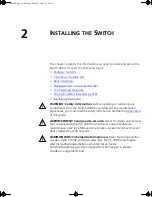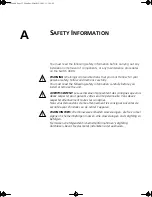
24
C
HAPTER
2: I
NSTALLING
THE
S
WITCH
Solving Problems
Indicated by LEDs
If the LEDs on the Switch indicate a problem, refer to
Table 8
, which
contains a list of problems and suggested solutions.
Table 8
Problems Indicated by LEDs
Managing the
Switch
Your Switch can operate in its default state. However, to make full use of
the features offered by the Switch, and to change and monitor the way it
works, you have to access the management software that resides on the
Switch. This is known as managing the Switch.
Managing the Switch can help you to improve the efficiency of the
Switch and therefore the overall performance of your network.
There are several different methods of accessing the management
software to manage a Switch. These methods are explained in
Chapter 3
.
Even if you do not intend to actively manage the switch, 3Com
recommends that you change the password to prevent unauthorized
access to your network. See
“Logging in as a Default User”
on
page 31
for more information.
Problem
Suggested Solution
The Power LED does
not light
Check that the power cable is firmly connected to the
relevant Switch unit and to the supply outlet. If the
connection is secure and there is still no power, you may
have a faulty power cord.
On powering-up, the
POST LED lights
yellow.
The relevant Switch unit has failed its Power On Self Test
(POST) because of an internal problem. Contact your
supplier for advice.
A link is connected and
yet the Status LED for
the port does not light
Check that:
■
All connections are secure.
■
The devices at both ends of the link are powered-up.
■
The quality of cable is satisfactory.
17100ua.bk Page 24 Monday, March 12, 2001 11:18 AM




